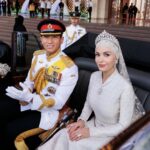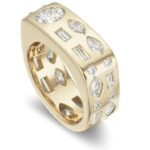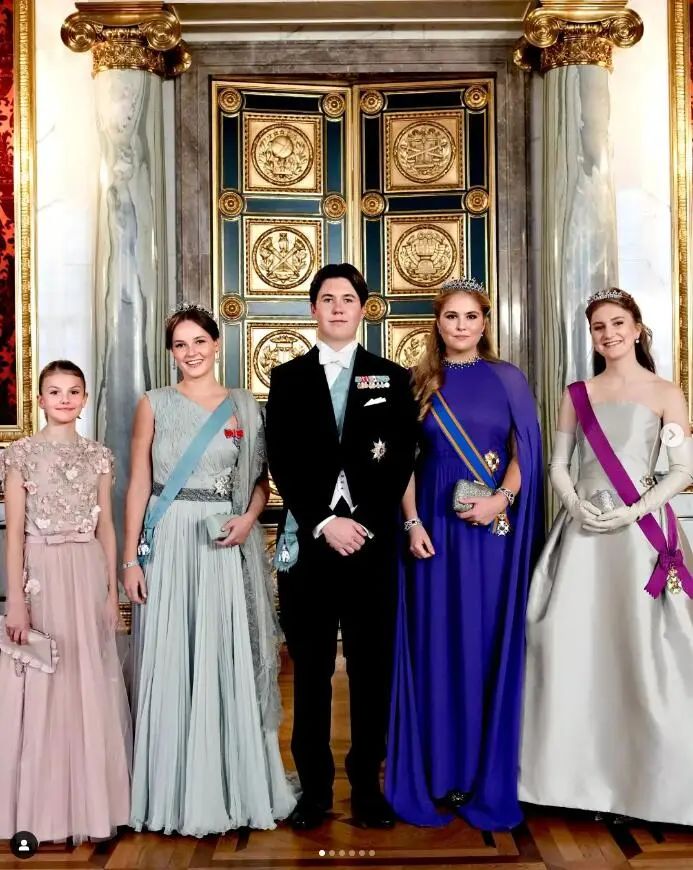
With the abdication of Queen Margrethe II of Denmark, there are no more reigning queens in the world. But don’t worry, Europe’s royal houses have a new wave of “reserves” – five crown princesses who occupy half of Europe’s thrones and are poised to take center stage. Who among them has the potential to become the future leader of royal fashion?
Indeed, several European monarchies will soon welcome their first-ever queens, thanks to progressive changes in succession laws. Why? On one hand, there’s a growing call for gender equality. On the other hand, queens naturally attract more attention, especially in fashion, significantly boosting the fashion industry. For instance, everyone’s eager to know what Kate wore or which jewels she donned, while few care about William’s attire.
While these crown princesses excel in various aspects, as fashion enthusiasts, let’s first compare the jewelry styles of these five queens-in-waiting!
Born in 1977, Crown Princess Victoria of Sweden is the eldest among the crown princesses. She studied in France, the United States, and Sweden, earning a bachelor’s degree in Peace and Conflict Studies from Uppsala University. She has also worked in various government offices and underwent basic military training with the Swedish Armed Forces.
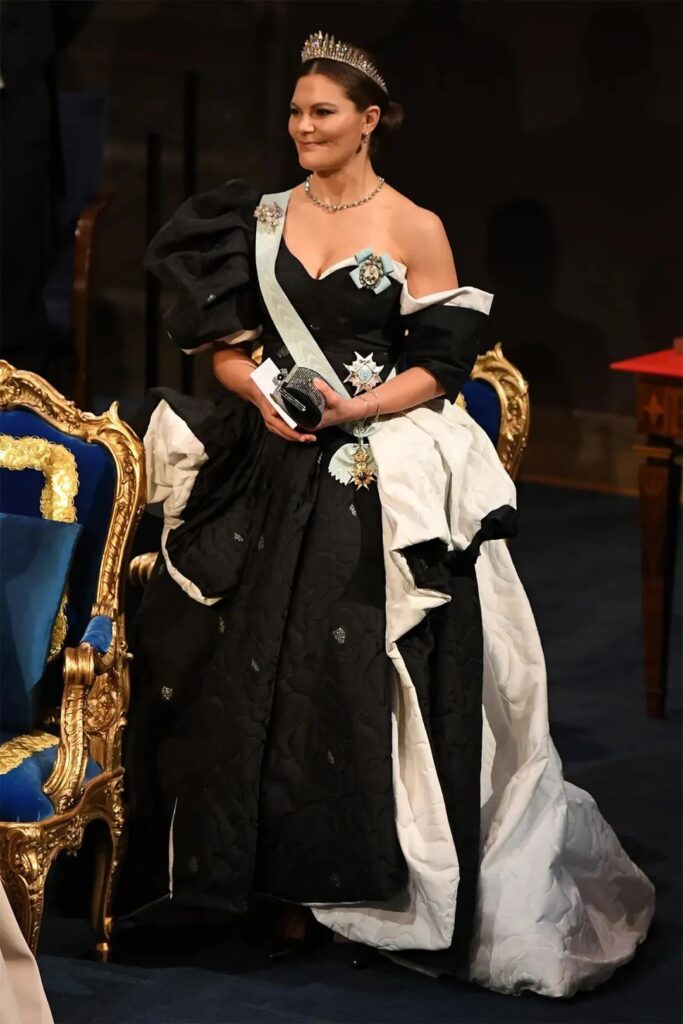
At 47, Victoria has extensive experience wearing tiaras. Traditionally, princesses receive a small tiara for their coming-of-age ceremony, marking a new life stage and being easier for young women to wear. Victoria’s first tiara was a birthday gift for her 18th birthday – a delicate sapphire and diamond tiara specially commissioned by her father.
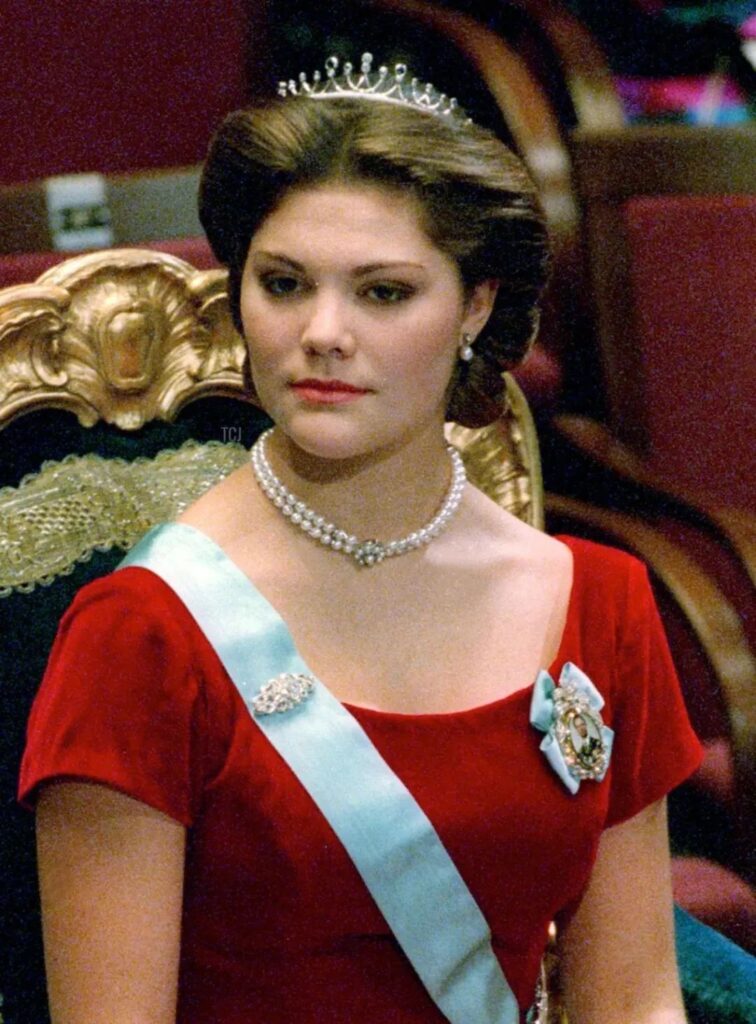
However, to be honest, Victoria has quite mature features, and this small, hairpin-like tiara doesn’t suit her well. She quickly turned to other tiaras from the Swedish royal jewelry collection. The ones that best complement her style are actually the Swedish Four Button Tiara and the Swedish Six Button Tiara.
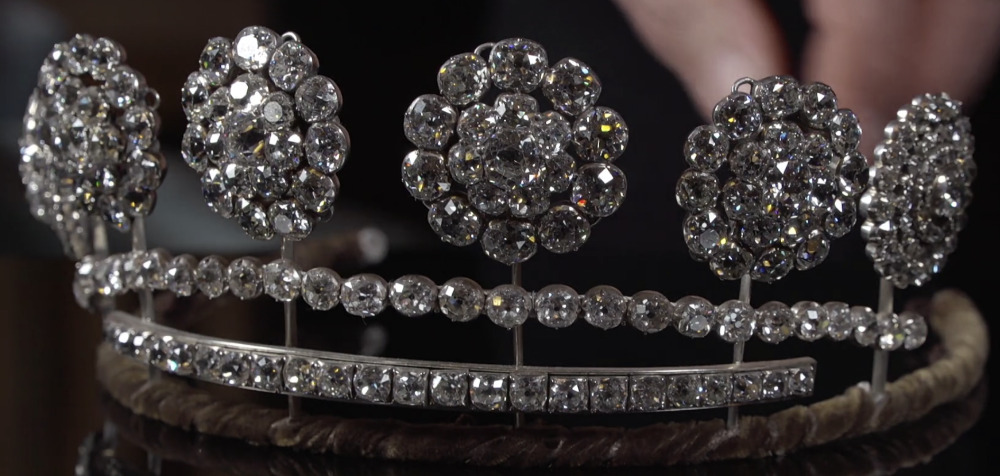
The tiaras are named “Button” because both are assembled from antique “diamond buttons” in the 20th century. These “diamond buttons” are believed to have belonged to Karl XIV Johan, the founder of the Bernadotte dynasty.
As a marshal under Napoleon, he was elected as the King of Sweden and is the progenitor of the current Swedish royal family. He wore these “diamond buttons” on his coronation robes to symbolize royal dignity.
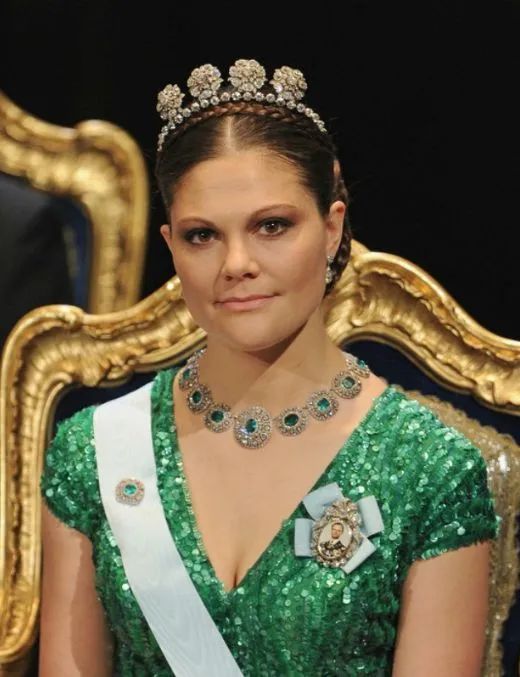
The Four Button Tiara has larger floral designs but a single-layer diamond frame underneath, giving it a more youthful appearance. The Six Button Tiara features more compact diamond roses with a two-layer diamond frame, resulting in a more ornate style.
Victoria often chooses the Six Button Tiara because, as a typical Scandinavian with a large frame and distinct facial features, the taller tiara better complements her face shape and stature.
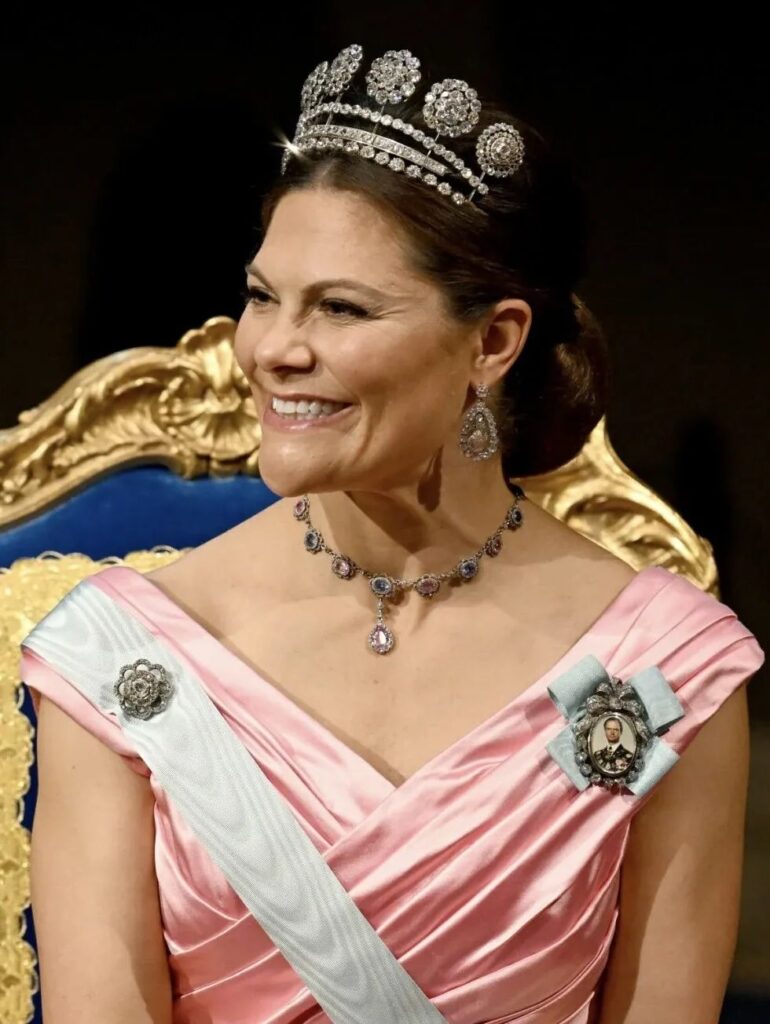
Although the Swedish royal family owns numerous tiaras, Victoria often opts for these “tall” designs. Generally, such “high tiaras” tend to be more elaborate due to their size. However, Victoria cleverly avoids the most luxurious pieces from the family collection to highlight the status of her mother, Queen Silvia.
She often selects “airy” designs, such as her two favorite tiaras – the Connaught Diamond Tiara and the Boucheron Laurel Wreath Tiara, both of which feature this style.
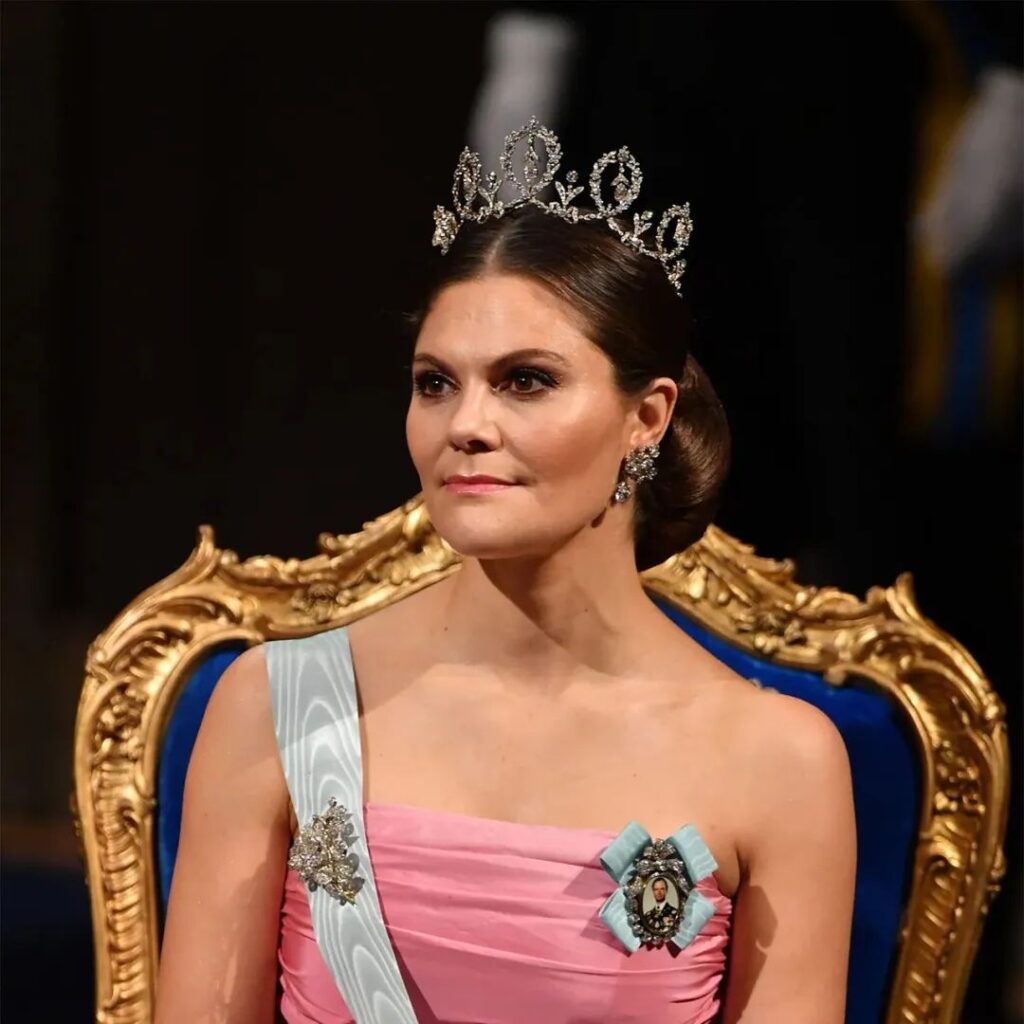
Interestingly, both of these tiaras originated from Princess Margaret of Connaught, Queen Victoria’s granddaughter, who married the future King Gustaf VI Adolf of Sweden. The couple was deeply in love, but Margaret died young before becoming queen. These two tiaras were left to her two sons.
The elder son, who became Crown Prince Gustaf Adolf of Sweden, inherited the Connaught Diamond Tiara, later worn by his wife, Princess Sibylla. This tiara, featuring pear-shaped diamonds suspended within a diamond frame, was one of Princess Margaret’s wedding gifts from her father, the Duke of Connaught. It was created by E. Wolff & Co. in 1904.
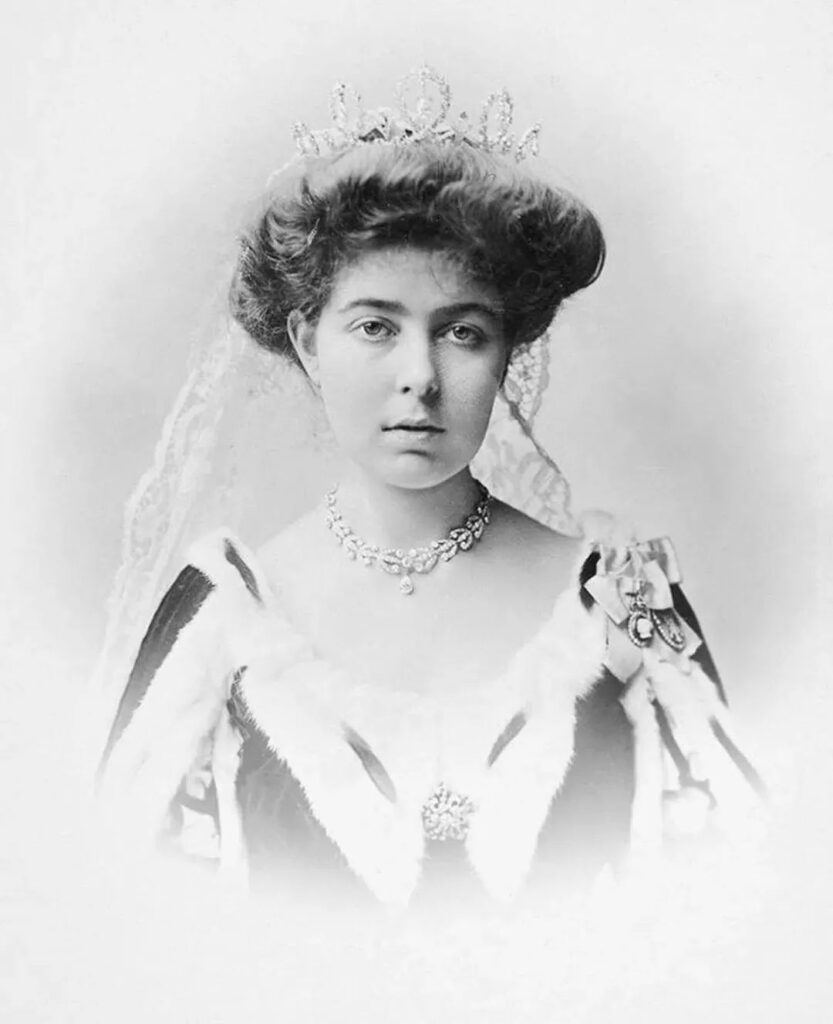
Princess Sibylla also faced misfortune; her husband passed away before ascending to the throne, leaving their four-year-old son as the crown prince. She could have become queen dowager, but she died before her son Carl XVI Gustaf’s accession. Thus, her title remained as princess.
The Connaught Diamond Tiara was left to her son, Carl XVI Gustaf, and is not part of the Swedish Royal Jewelry Foundation but his personal property. His wife, Queen Silvia, frequently wore it in her younger years. Several Swedish princesses have borrowed this tiara, but since 2005, Crown Princess Victoria has been wearing it regularly.

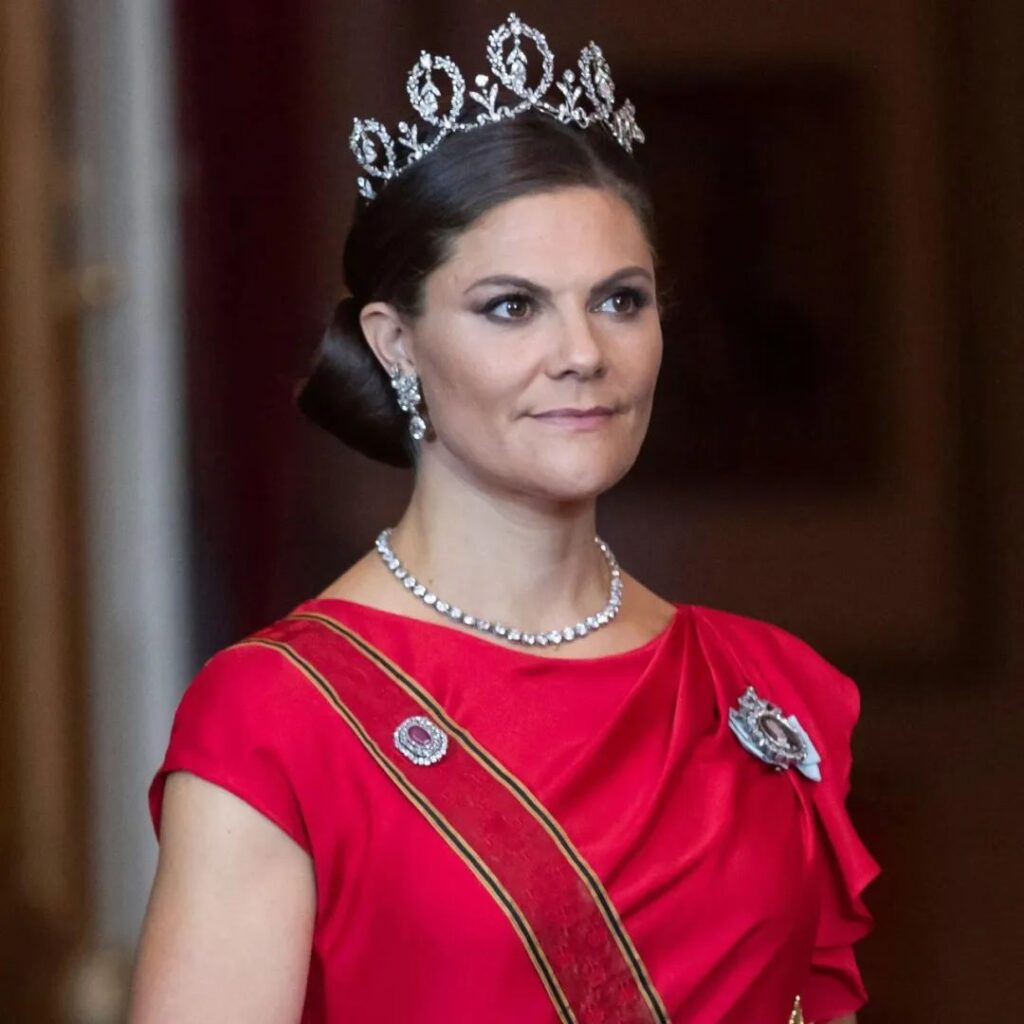
The other tiara, the Boucheron Laurel Wreath Tiara, is now part of Crown Princess Victoria’s personal collection.
Margaret often wore this tiara as a necklace, possibly due to its more delicate and smaller size compared to the Connaught Diamond Tiara. She left it to her third son, Prince Bertil (as the second son renounced his royal title to marry a commoner).
Although Prince Bertil also fell in love with a commoner, they waited patiently, and Lilian eventually became a princess wearing this tiara. After her death, she bequeathed it to Crown Princess Victoria.
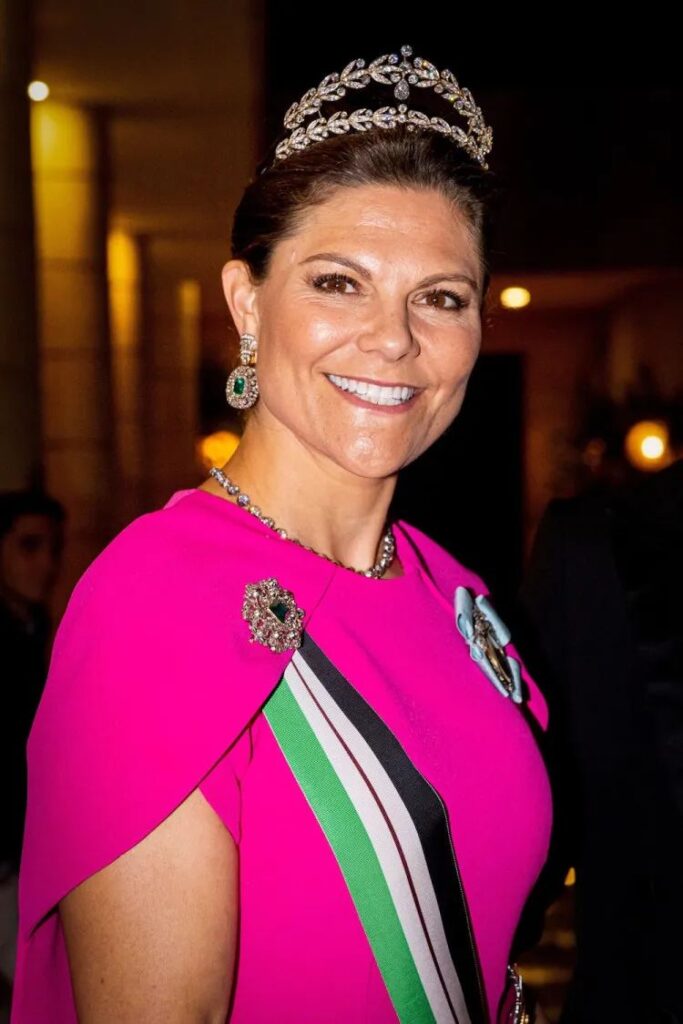
This tiara appears quite small when worn as a necklace but looks stately and elegant when placed on a tiara frame. Its double-layer design with a large pear-shaped diamond suspended in the center enhances the tiara’s height. The space between the two laurel wreaths adds elegance without being overly ornate, perfectly suiting Victoria’s facial features and status.
Princess Elisabeth of Belgium, born in 2001, is set to become Belgium’s first queen regnant if she ascends to the throne as expected. She studied history and politics at Lincoln College, Oxford, and speaks Dutch, French, German, English, and Chinese. The young princess has already worn two tiaras, mainly for important occasions such as other royal heirs’ birthday celebrations or weddings.

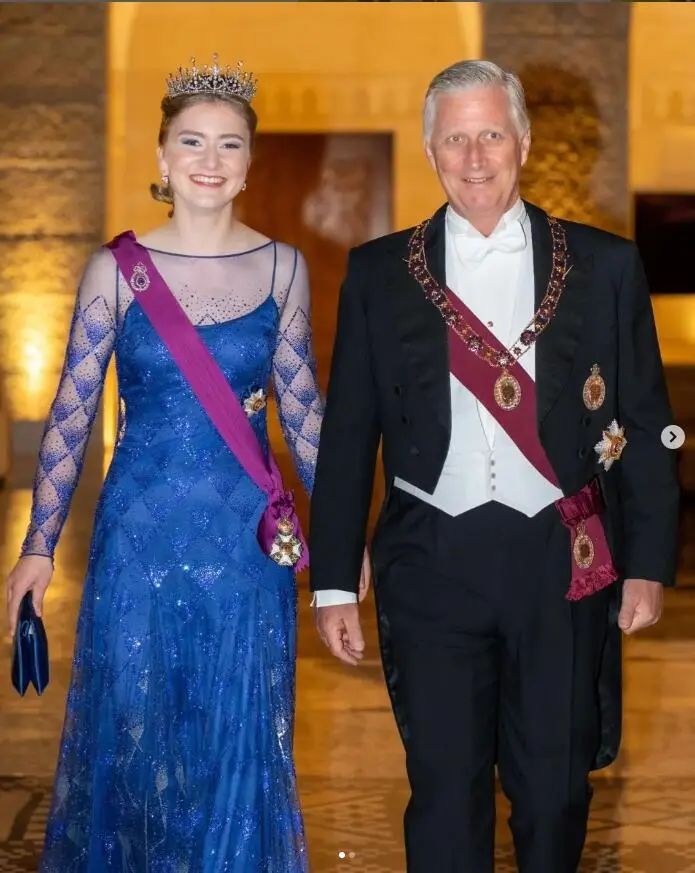
Elisabeth’s first tiara is the Wolfers Necklace Tiara, a convertible piece as its name suggests. Created by jeweler Wolfers in 1960 with 205 diamonds, it was a wedding gift to Queen Fabiola, wife of King Baudouin I, funded by wealthy Belgian citizens.
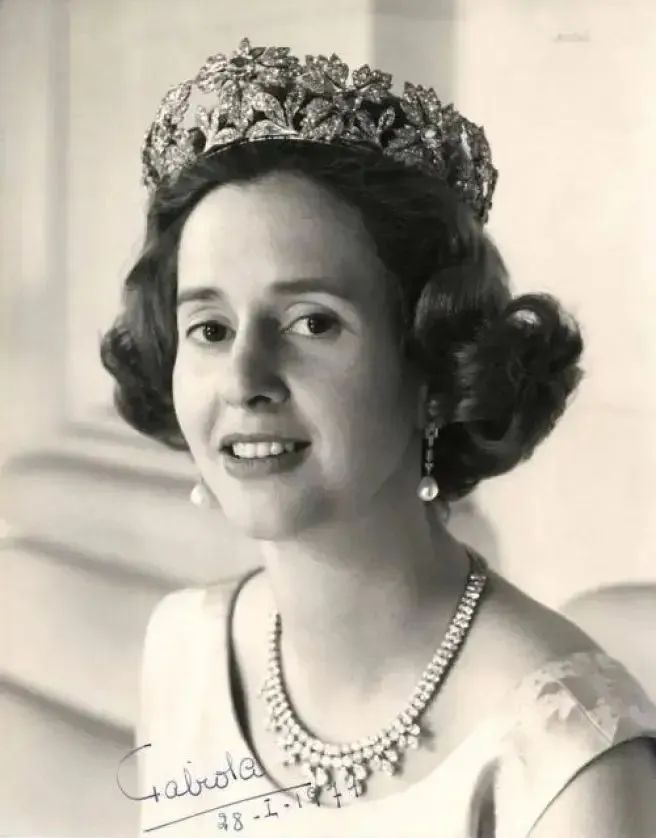
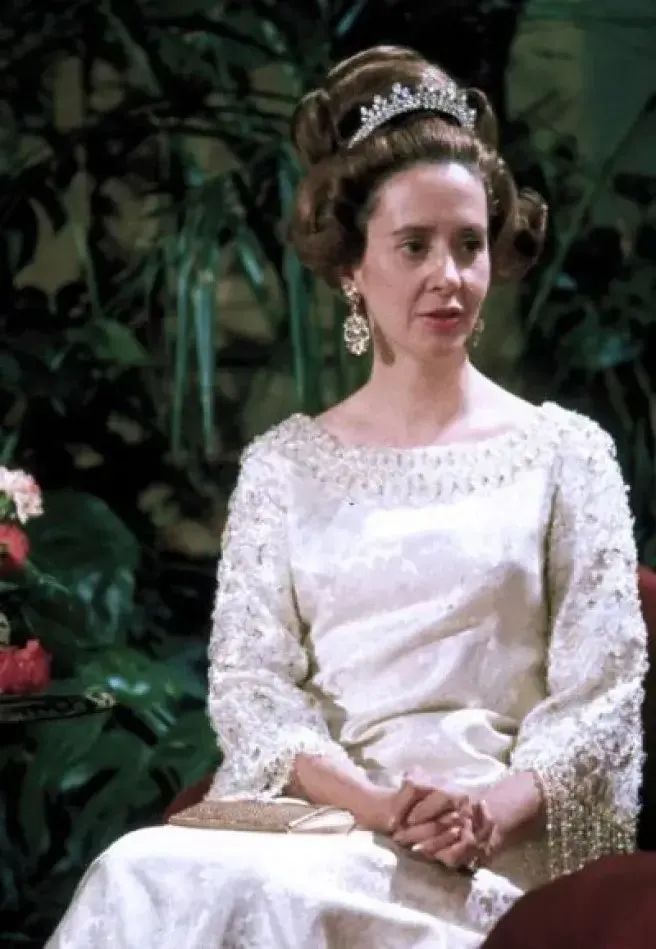
Queen Fabiola adored this piece, often wearing it as a necklace in her younger years before it became her primary tiara. Upon her death, she left it to Queen Mathilde. The jewel is easy to wear, lightweight, yet brilliantly sparkling due to its densely set diamonds, making it a favorite of Queen Mathilde.
As Crown Princess Elisabeth grew older, Queen Mathilde lent her the tiara. Elisabeth wore the Wolfers Necklace Tiara at the 18th birthday gala dinner for Denmark’s Prince Christian.
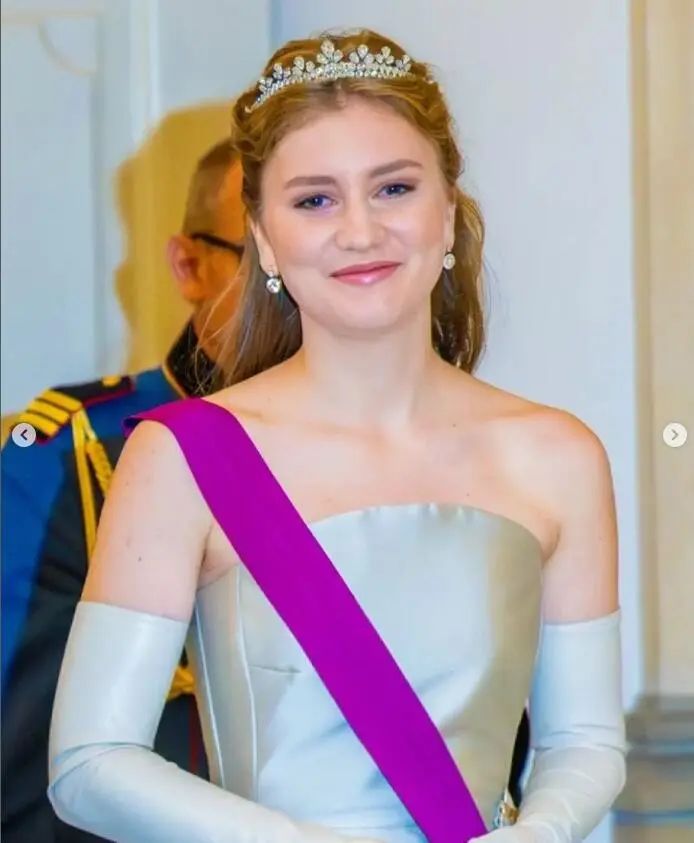
Elisabeth’s other tiara was an 18th birthday gift. While the official source wasn’t revealed, it was described as a specially purchased antique tiara. Royal experts have noted its striking resemblance to a pearl and diamond tiara owned by Russian Empress Alexandra Feodorovna. That tiara was created by Fabergé in 1897 as a Christmas gift from Tsar Nicholas II to the Empress.
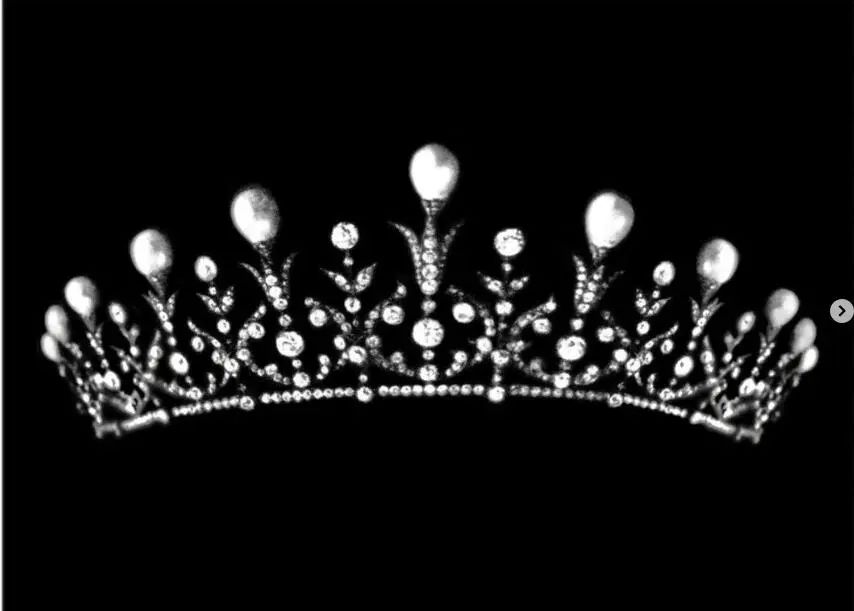
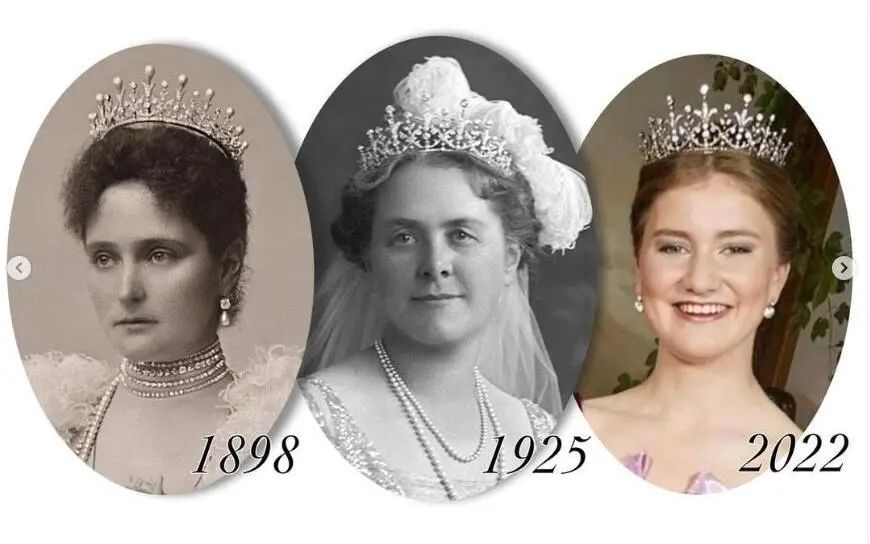
Viscountess Evelyn Brodstone
Crown Princess Elisabeth of Belgium wearing the Viscountess Weymouth Tiara
After the fall of the Romanov dynasty, the tiara disappeared until 1925 when the first Viscountess Weymouth, Evelyn Brodstone, wore it in public. It then became a family heirloom of the Weymouth family. At some point (possibly to pay inheritance taxes), the tiara was acquired by the Belgian royal family. Elisabeth wore this tiara at the 18th birthday celebration of Crown Princess Ingrid Alexandra of Norway.
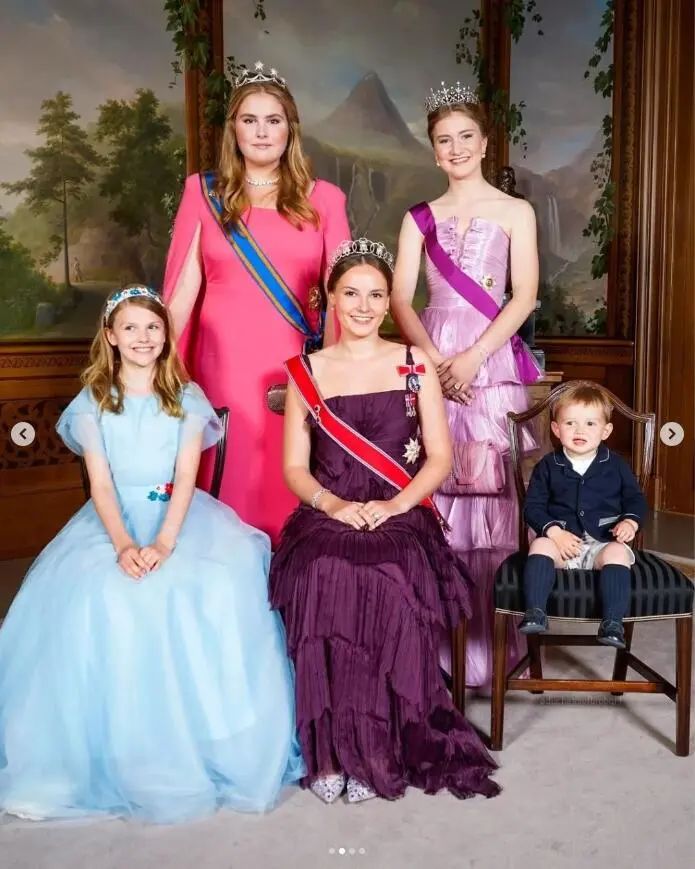

As Belgium only became an independent nation in 1830, separating from the Netherlands, the royal family has only seven generations of history, limiting their royal jewelry collection. Moreover, Elisabeth is still quite young and may not yet fully carry the gravitas of a tiara. However, her jewelry taste is not to be underestimated, particularly her unique choices in earrings, which show that she’s not just an elegant princess but also the heir to a nation.
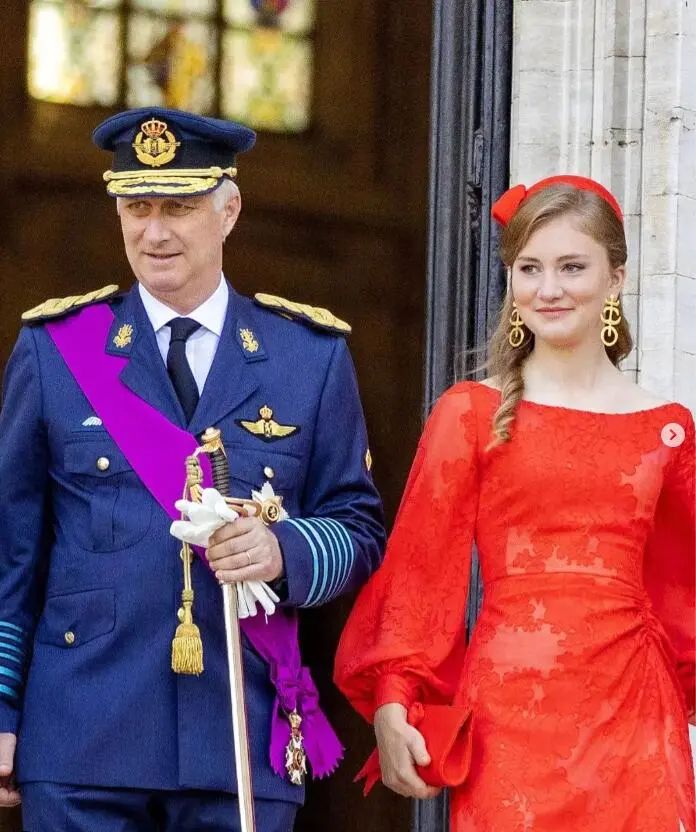
Elisabeth has excellent fashion sense, easily carrying off high-purity colors and skillfully using statement earrings to break balance and create focal points in her overall look.
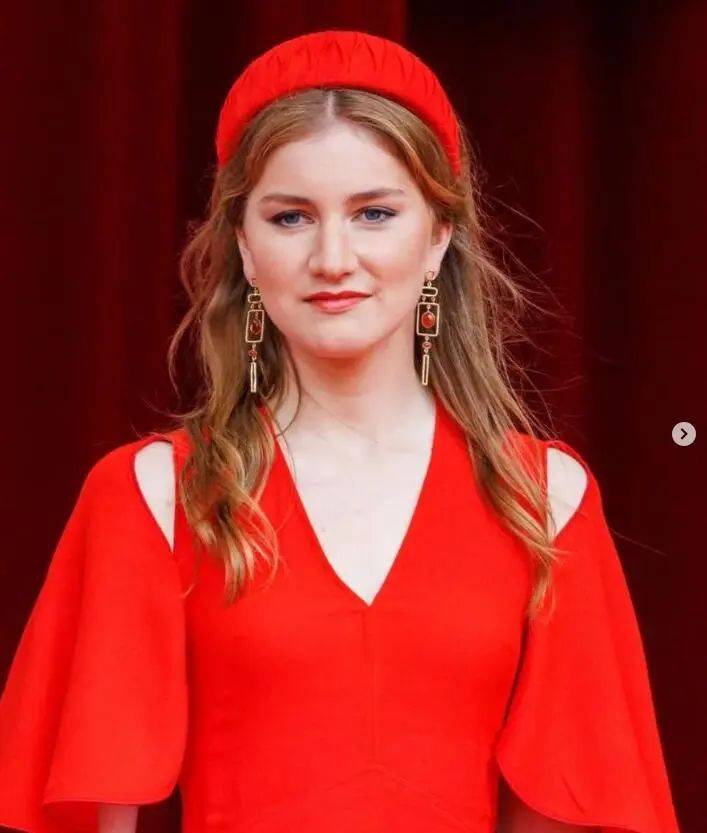
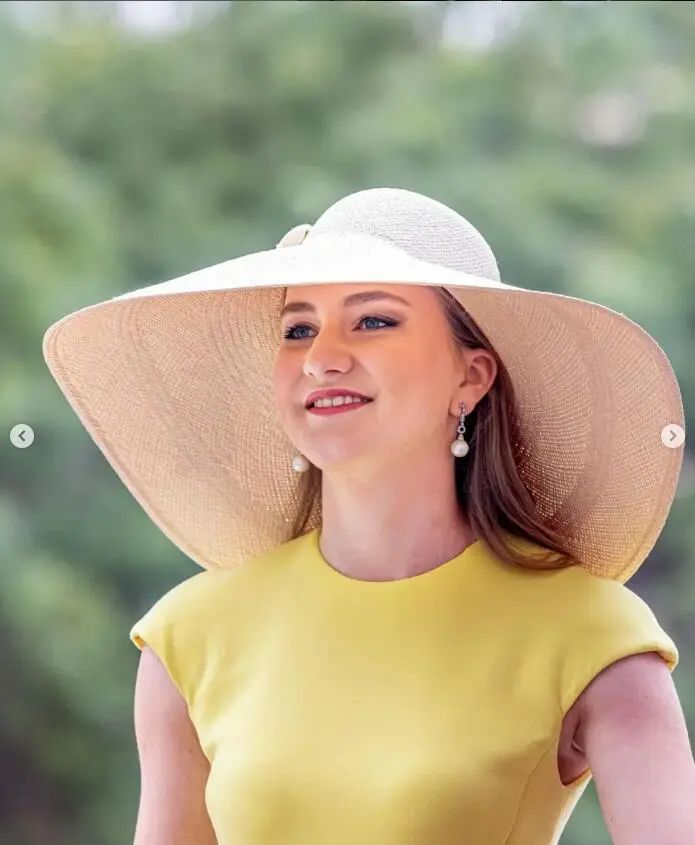
She favors modern, powerful designs that are not confined to a single style. She also likes textural variations in materials, reflecting her pursuit of breaking with tradition through her earring choices.
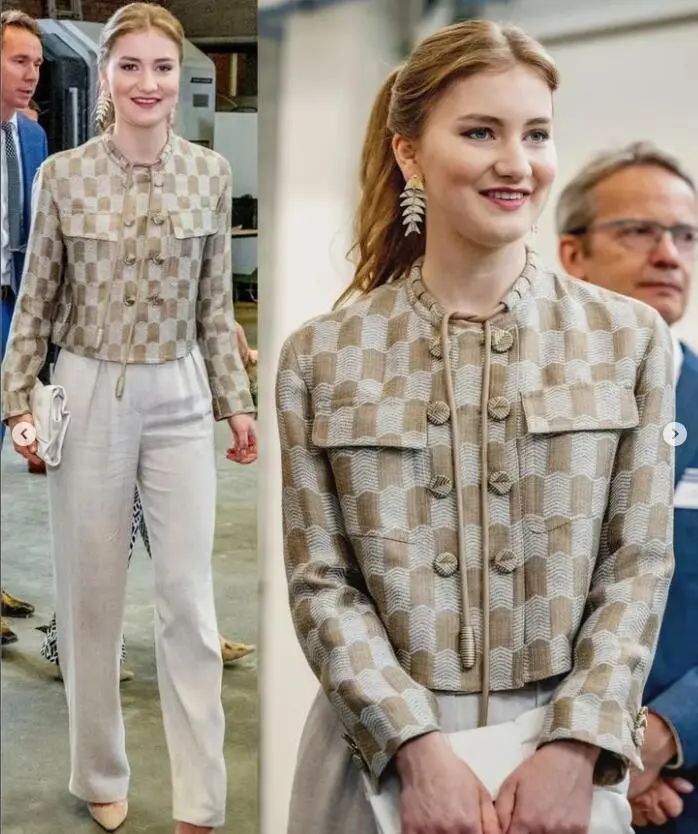
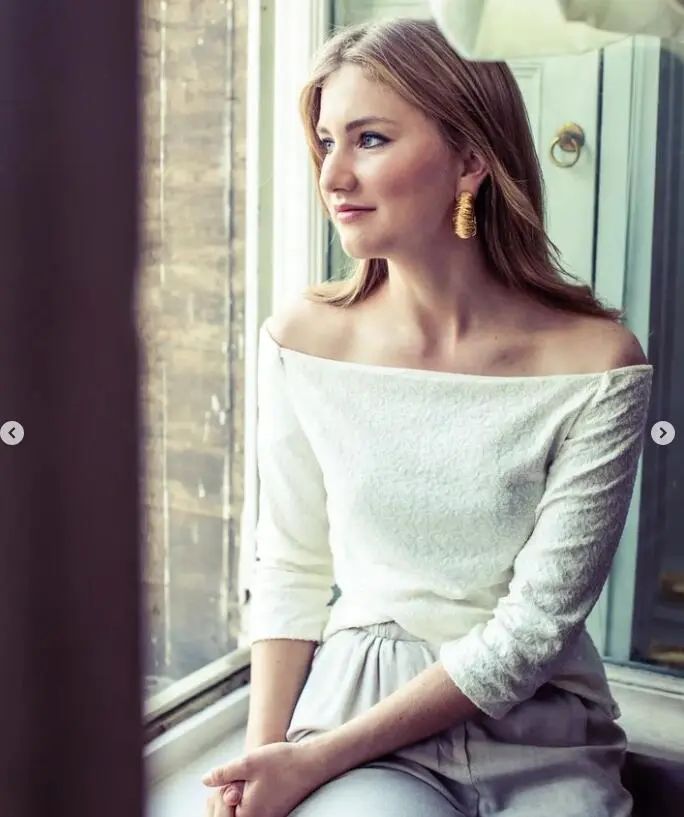
Crown Princess Catharina-Amalia of the Netherlands, born in 2003, has faced public criticism about her figure since childhood, despite being quite attractive. She has always wanted to set aside her royal status and live like an ordinary person.
While studying at the University of Amsterdam, she applied for normal dormitory accommodation and refused the government’s annual allowance of $1.8 million for the heir apparent, believing she hadn’t earned it. These actions have made her very popular among the public.
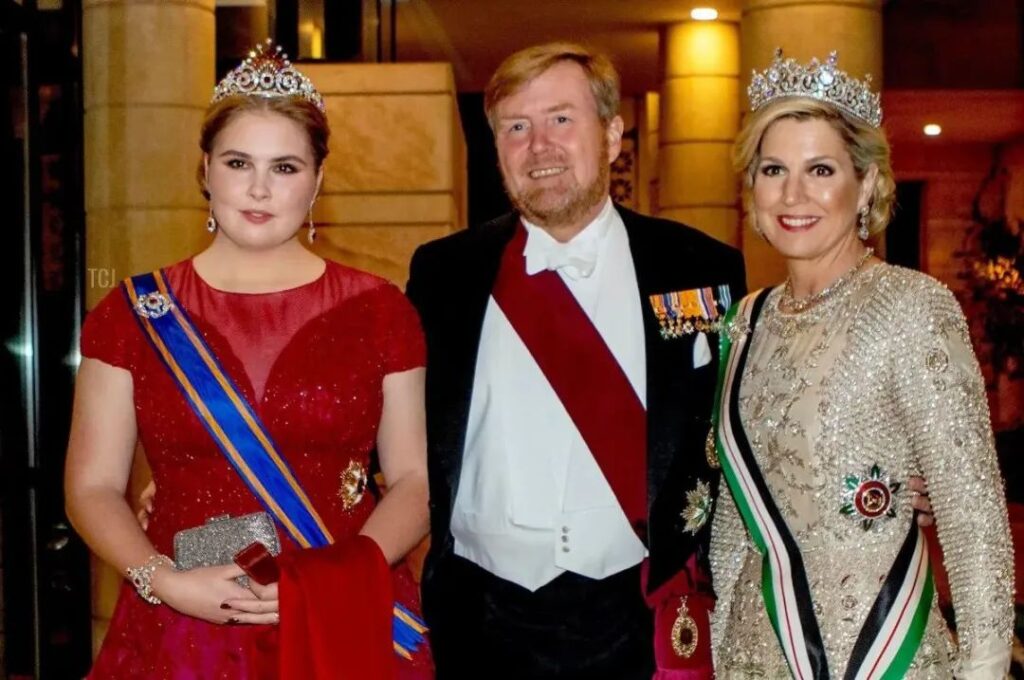
Catharina-Amalia has now worn several tiaras, but her choices have been somewhat questionable. For some reason, she often wears tiaras with triangular designs that are too small for her face and don’t complement her features or presence. Ironically, when she was younger and playfully tried on her mother’s tiaras, she looked quite stylish! This has left royal watchers rather concerned, as the Dutch royal family certainly has more suitable tiaras for her to choose from.
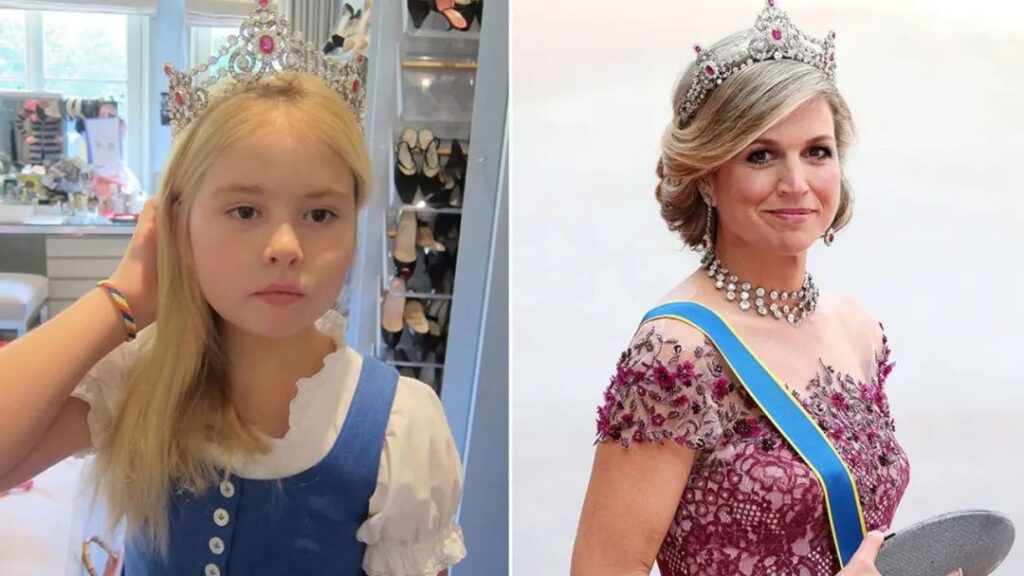
For instance, the Ruby Peacock Tiara she has worn was commissioned by Queen Wilhelmina in 1897. It’s quite ornate, inspired by a peacock’s fan and set with large rubies. However, its triangular shape gives the tiara an ascending, diminishing effect that, combined with Catharina-Amalia’s low chignon, looks rather unbalanced.
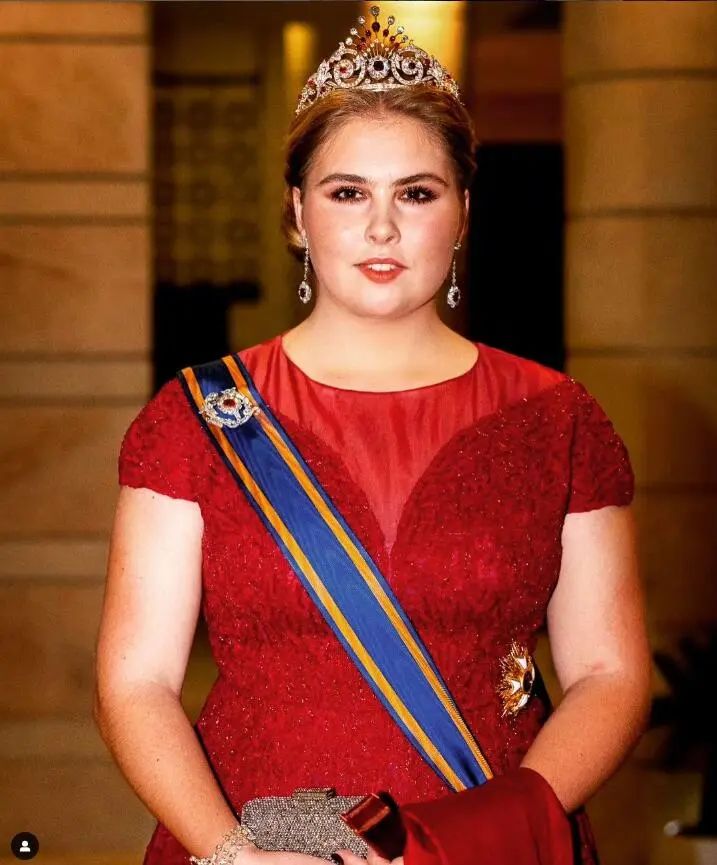
Another tiara she’s worn is the Diamond Star Tiara, reconstructed from Queen Sophie’s diamond star brooches. This tiara has similar issues – it appears too small and its design may be problematic, with a narrow base and overly clustered decorative elements at the top. When Queen Máxima wore this tiara at her wedding, it made her entire head appear rectangular, lacking elegance and romance.
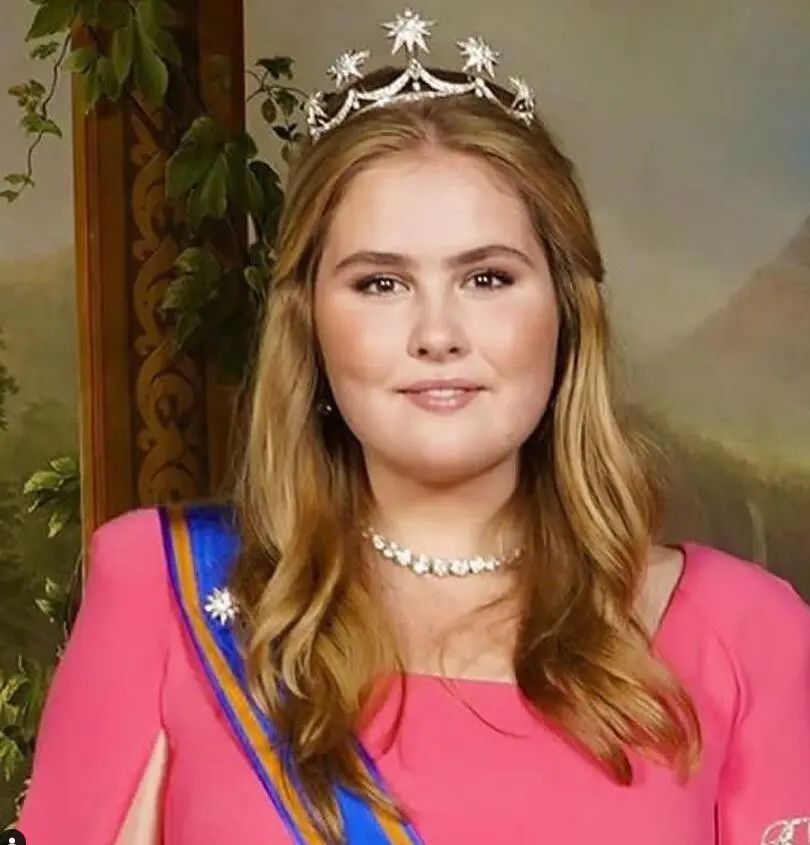
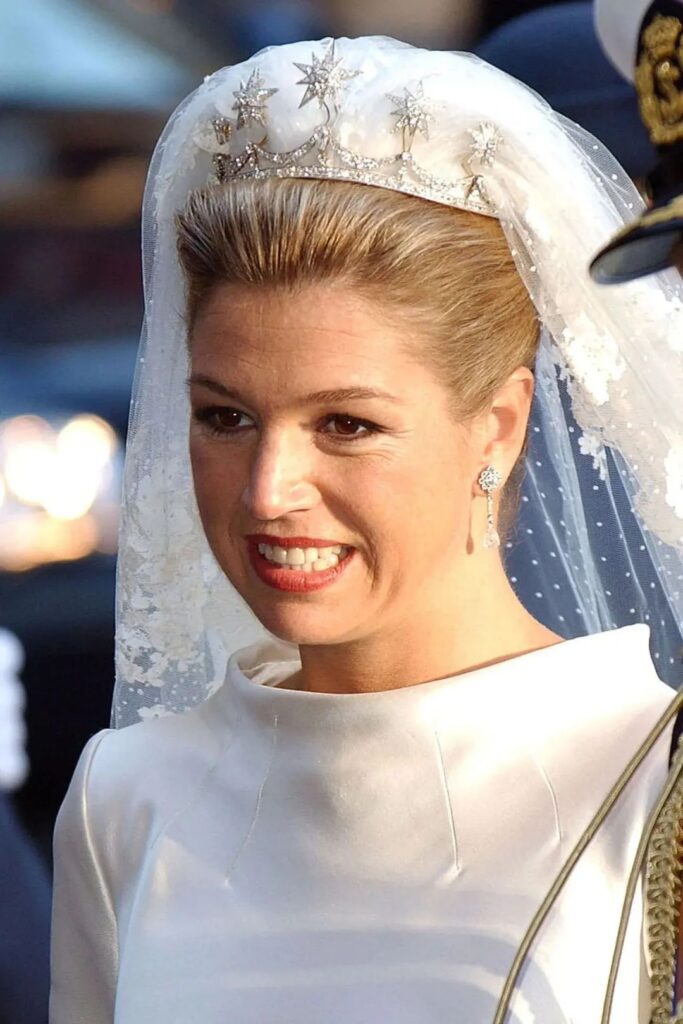
In fact, Catharina-Amalia looks quite good wearing tiaras with traditional designs. They don’t need to be large or overly ornate. For example, she looked stunning in the Dutch Sapphire Necklace Tiara.
This tiara is a combination of two sapphire necklaces belonging to Queen Wilhelmina and Queen Emma. It has a strong Gothic style with a sense of order. Although not very tall or large, it suits Catharina-Amalia very well.
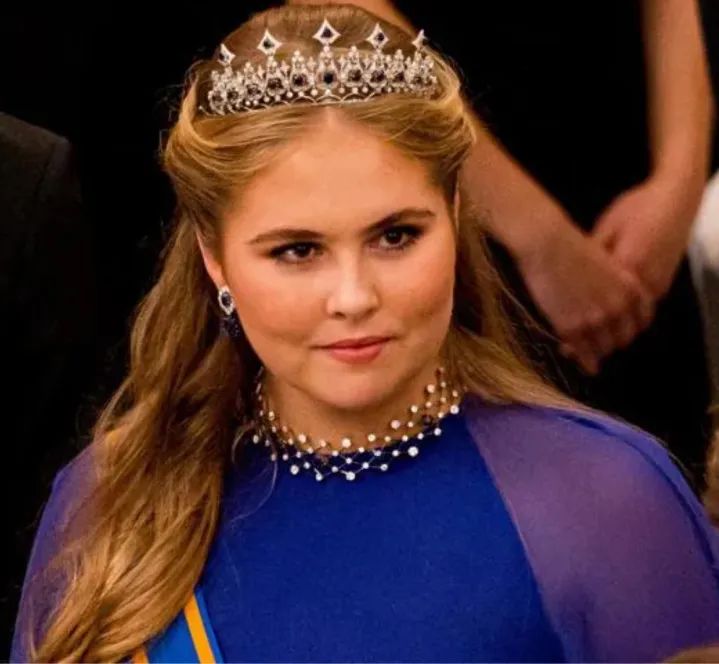
It seems that as long as the tiara doesn’t have a triangular design, Catharina-Amalia can carry it off well. Even some lighter designs, such as the Aquamarine Tiara or the Antique Pearl Tiara, which are small but have dispersed designs, can effectively complement the Crown Princess’s facial features. It’s strongly suggested that the Crown Princess try on these two smaller tiaras worn by Queen Máxima.

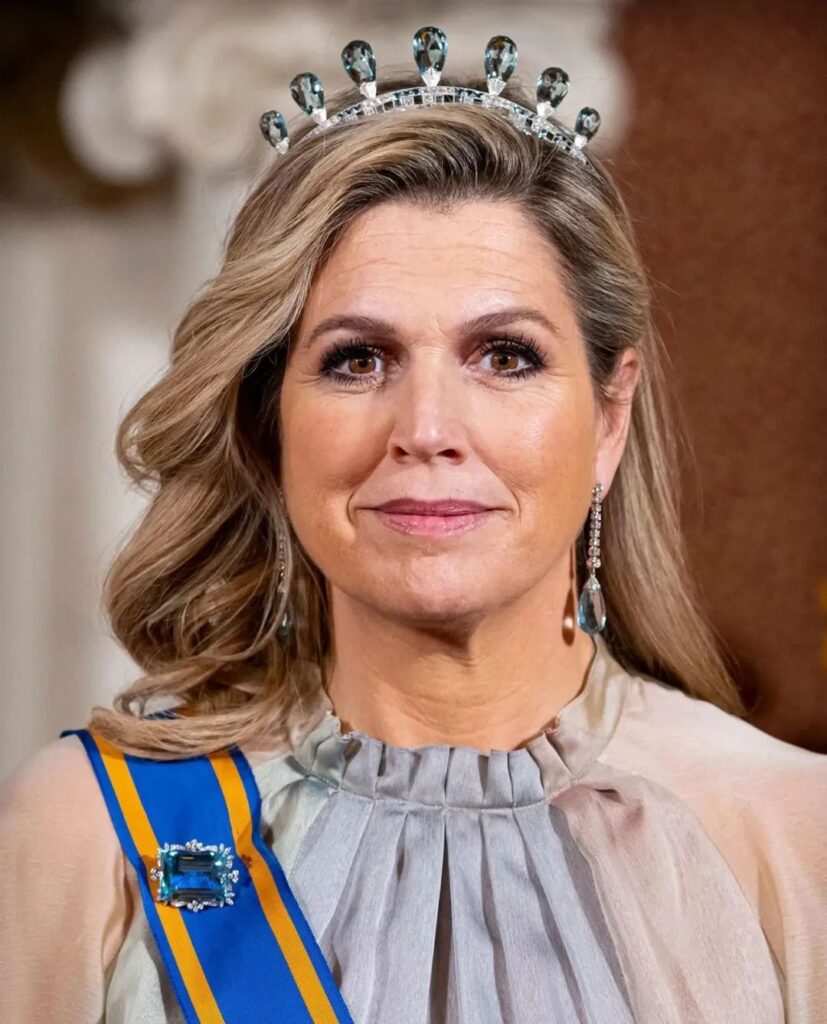
Crown Princess Ingrid Alexandra of Norway, born in 2004, is second in line to the throne after her father, Crown Prince Haakon. Due to her grandfather’s advanced age and her mother’s health issues, many Norwegians have called for King Harald V to pass the throne directly to the princess. In fact, Ingrid Alexandra has already begun to take on some public duties in place of her mother, appearing more frequently at royal engagements.
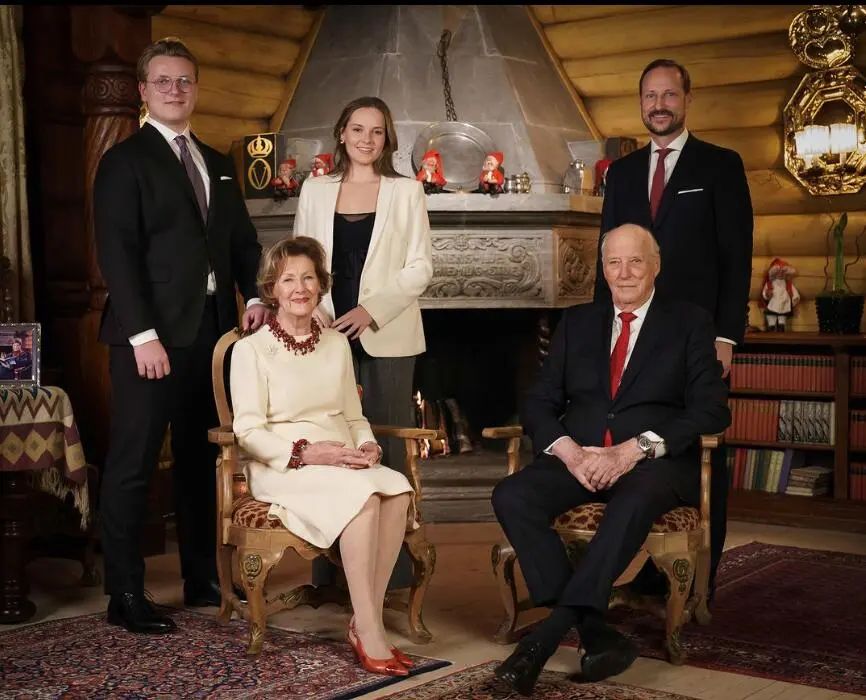
Ingrid Alexandra has always maintained an elegant style, reminiscent of royal icon Kate Middleton. She favors simple suits paired with delicate jewelry, exuding a refined beauty without ostentation.
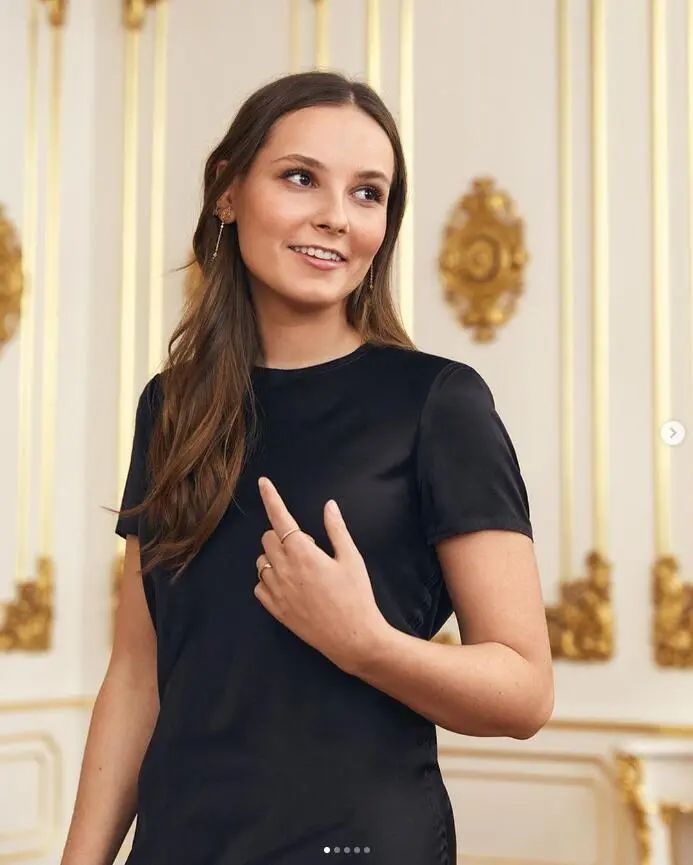
Both Ingrid Alexandra and Kate seem to have a penchant for classic aesthetics, often choosing ethereal designs for their formal wear. Ingrid Alexandra also likes long earrings, but unlike the Belgian Crown Princess’s edgy choices, she opts for elegant and gentle designs.

In her daily life, this young princess, like Kate, prefers light-colored, ladylike designs complemented by one or two pieces of fine jewelry. Her style is approachable and easy to replicate, embodying an accessible form of elegance.
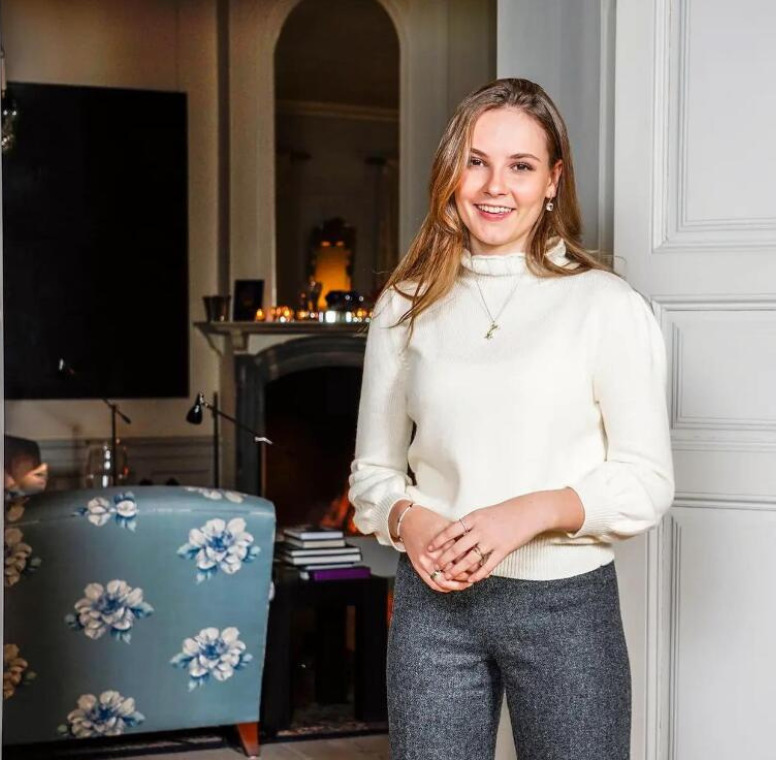


On Ingrid Alexandra’s 18th birthday, following royal tradition, she received her first personal tiara – the Boucheron Pearl Circle Tiara.
This tiara was exhibited by Boucheron at the 1900 Paris World Exhibition and was purchased by Prince Carl of Sweden for his wife, Princess Ingeborg of Denmark. Ingeborg adored this tiara and wore it frequently until her death. Later, the tiara was passed down to Ingeborg’s granddaughter, Princess Ragnhild of Norway, sister of the current King Harald V.
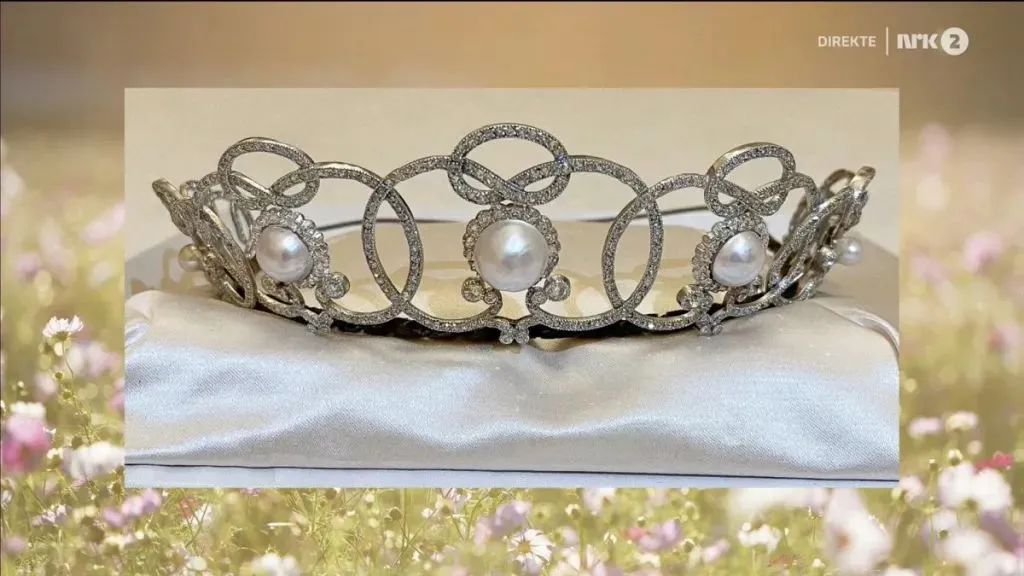
Before her death, Princess Ragnhild wished for the tiara to return to the royal family and be worn by Crown Princess Ingrid Alexandra. Thus, on her coming of age, Ingrid Alexandra received this precious gift and donned it with the blessings of her elders. This is currently the first tiara she has officially worn.
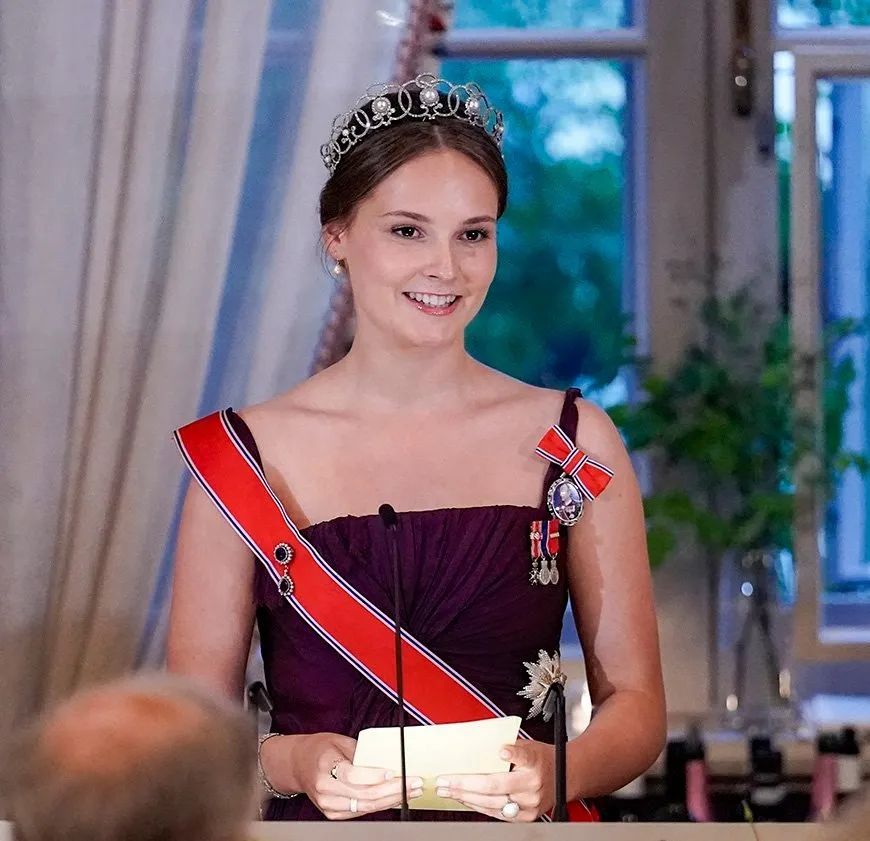
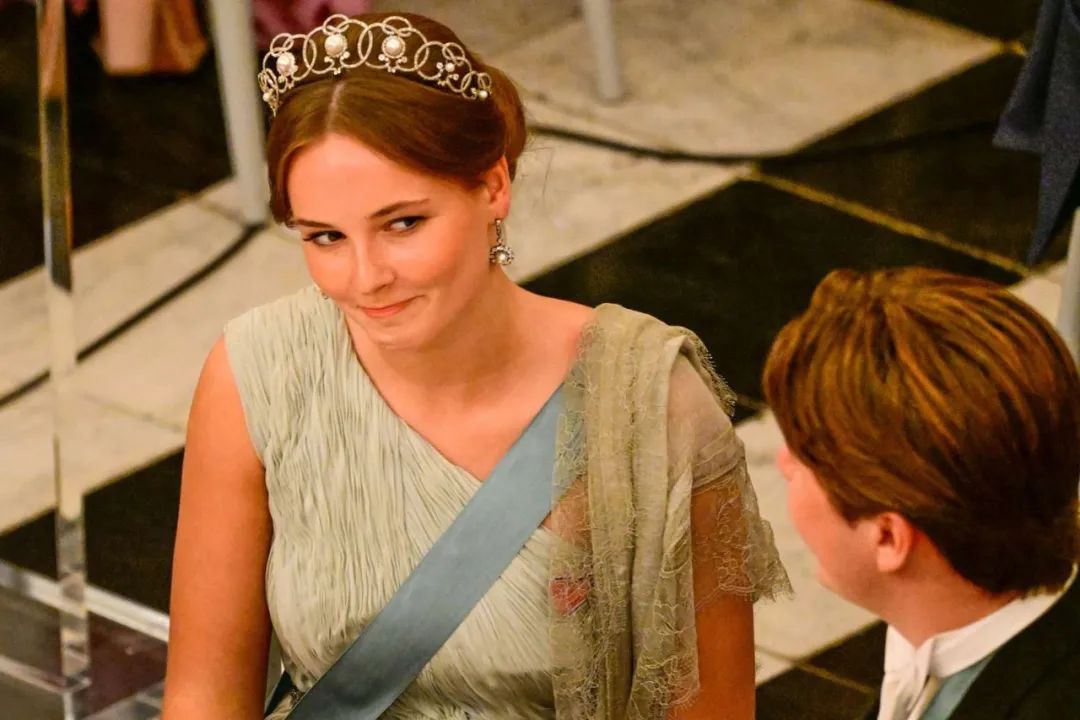
The Norwegian royal jewelry collection owes much to two queens: Queen Maud, who inherited many jewels from her mother, Princess Ingeborg; and Queen Märtha, who inherited numerous pieces from her mother, Queen Alexandra.
However, many of the more elaborate tiaras are worn by the current Queen Sonja and might be too grand for the young Ingrid Alexandra to carry off at present. Instead, we can look forward to seeing her wear some of the smaller tiaras often worn by her mother, Crown Princess Mette-Marit, such as Queen Maud’s Pearl Tiara, the Diamond Daisy Tiara, the Amethyst Necklace Tiara, or the Vifte Tiara.
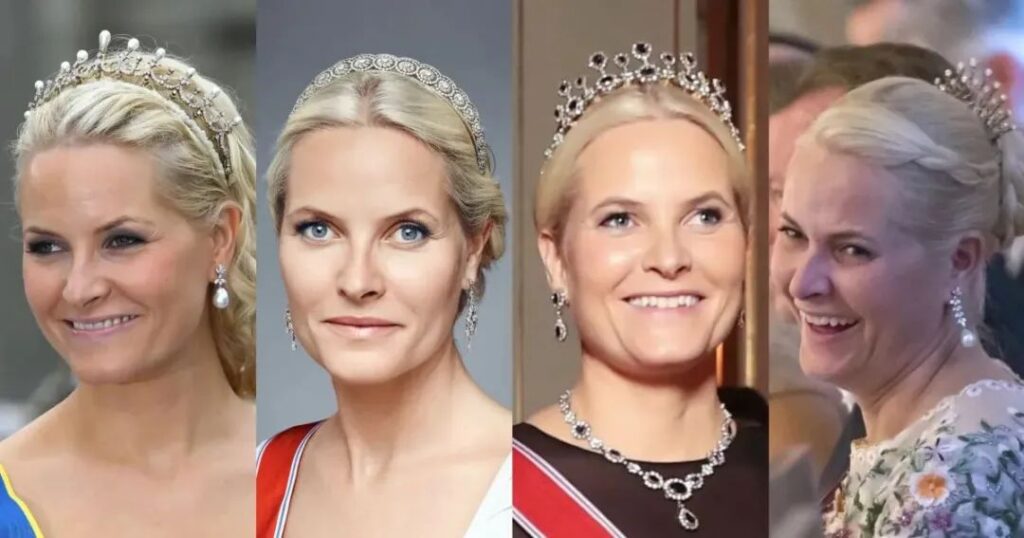
Princess Leonor of Spain, born in 2005, is the youngest among the five European Crown Princesses. She is the eldest daughter of King Felipe VI and Queen Letizia. Unlike the other four Crown Princesses, Leonor is not the legal heir presumptive due to Spain’s male-preference primogeniture law. However, given that her parents are both over 50, the likelihood of a male heir is low, making Leonor the probable first Queen of Spain since Isabella II’s reign in the mid-19th century.
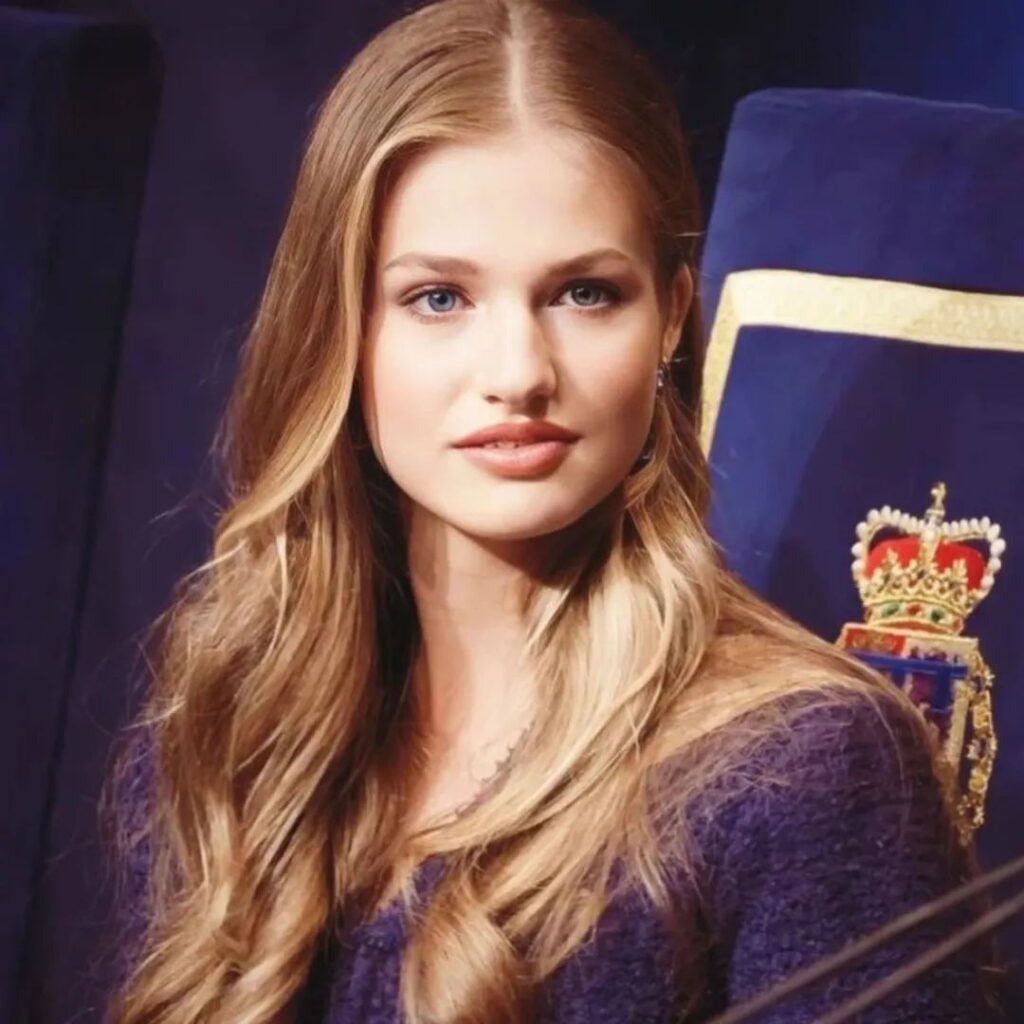
Among the five, Leonor is arguably the “beauty representative.” She has been consistently pretty since childhood, rivaling Hollywood child stars. This is likely due to her parents’ good genes, as King Felipe VI and Queen Letizia are known for their attractiveness among royals.
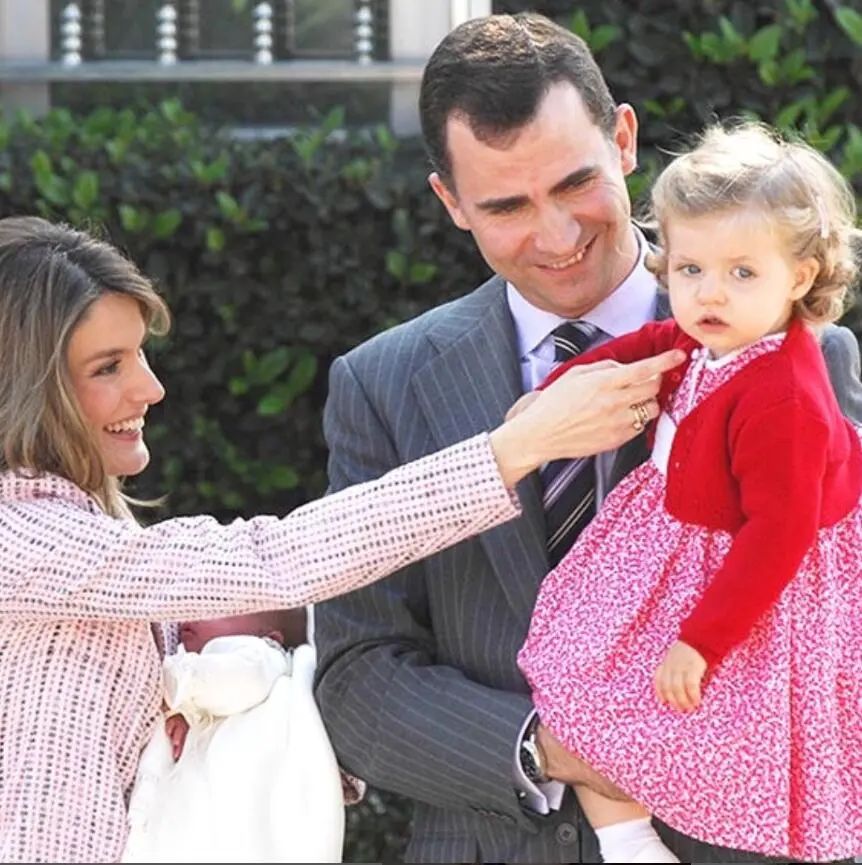
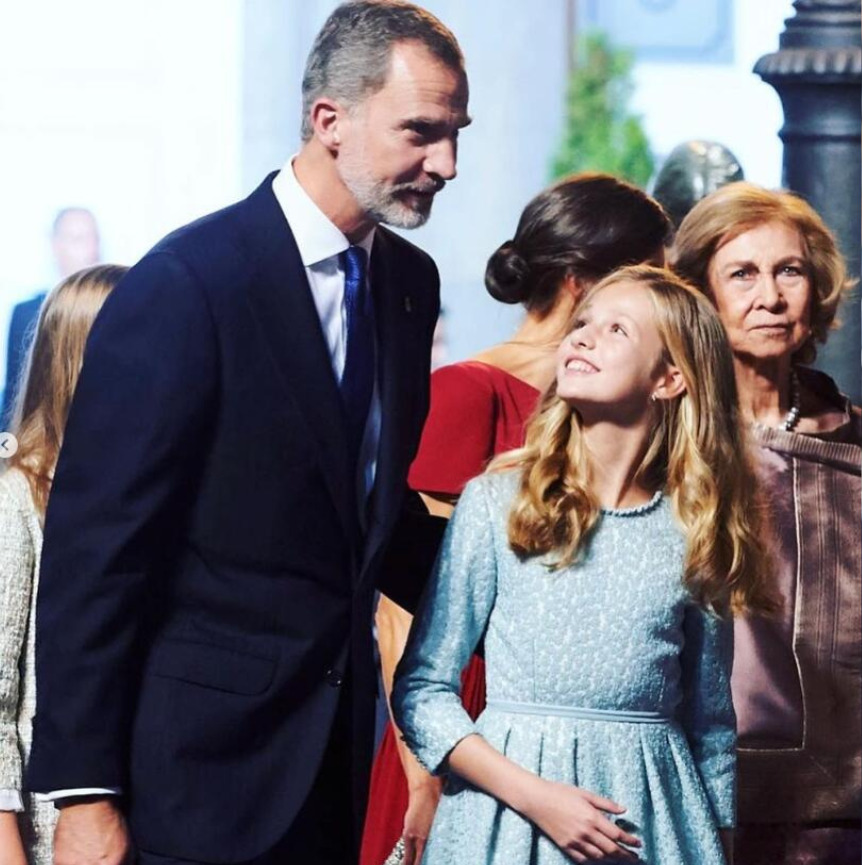
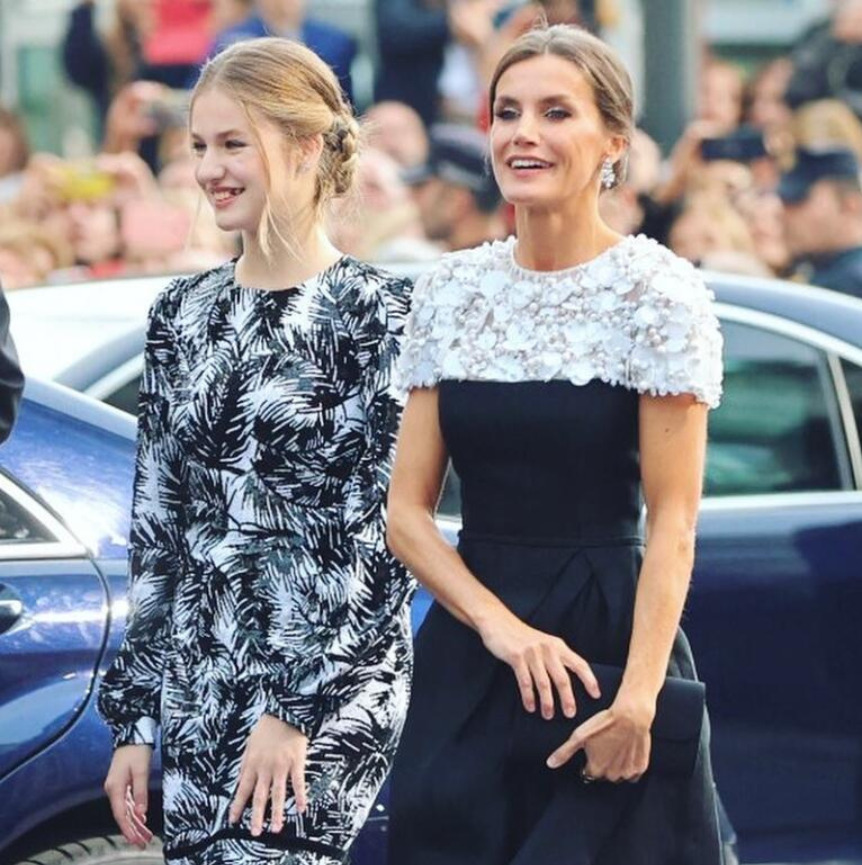
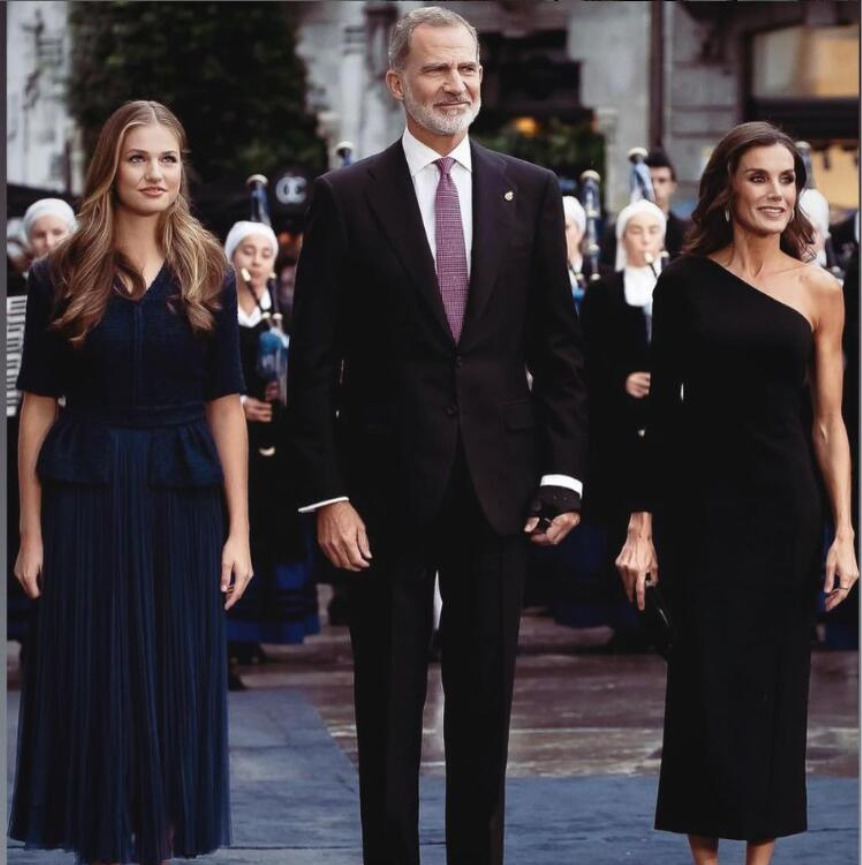
The young princess has always presented a lively, girlish image to the public. Her preferred jewelry pieces are various delicate stud earrings. These small, dainty designs perfectly match her current youthful charm. After all, what young girl doesn’t enjoy looking cute and refined?

However, the time has come for the innocent princess to take on greater responsibilities. Starting in 2023, Princess Leonor began her military training and started undertaking royal duties. Surprisingly, the princess who once embodied a fairy tale image looks equally impressive in military uniform.
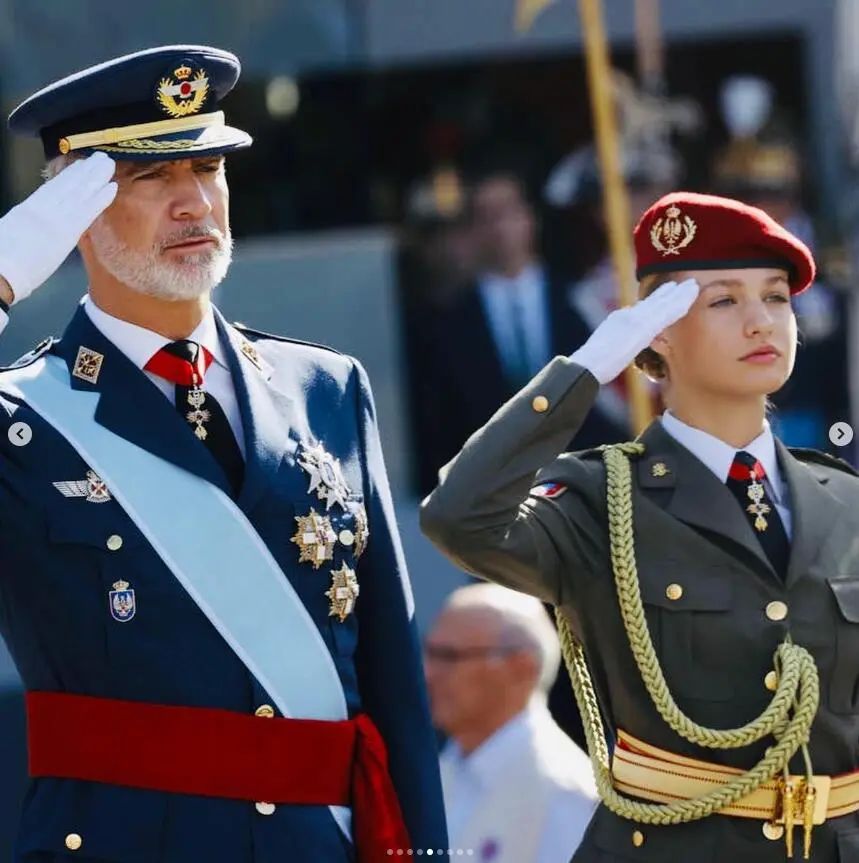
On October 31, 2023, Princess Leonor’s 18th birthday, a solemn swearing-in ceremony was held in Madrid, Spain. She swore allegiance to the Spanish Constitution before Parliament and received the Order of Charles III. She said, “From today, I will serve all Spaniards with respect and loyalty.”
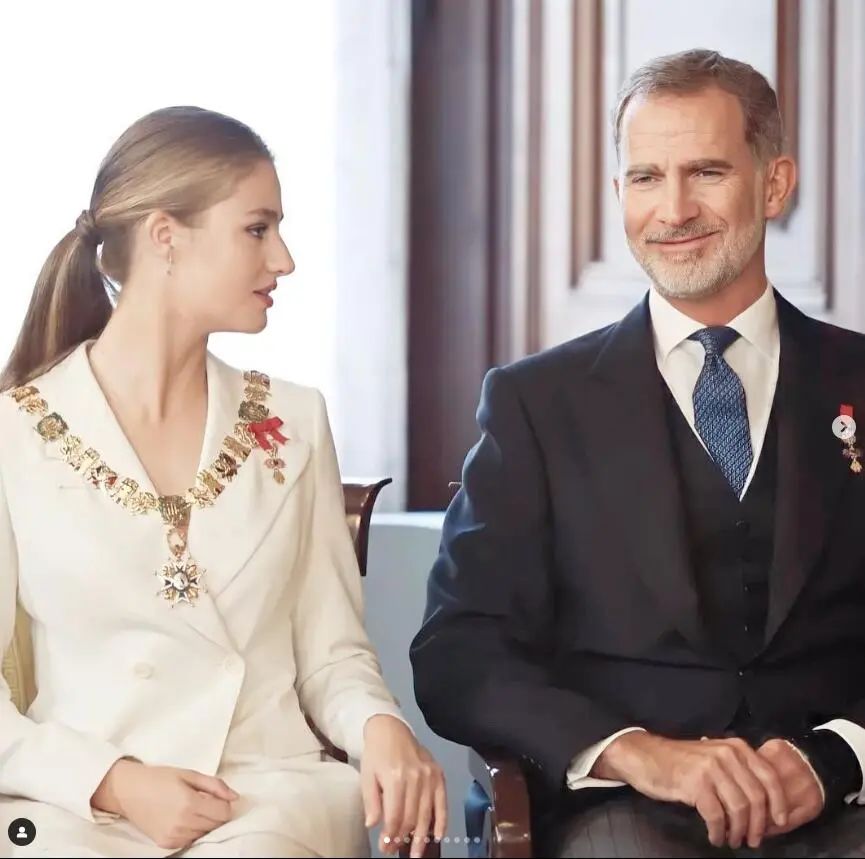
As of now, she has not yet appeared wearing a tiara. Royal watchers have the opportunity to suggest a suitable first tiara for Princess Leonor, and the Spanish royal jewelry collection offers some intriguing options.
The author boldly suggests the Spanish Floral Tiara as a good choice. This tiara, made by the British jeweler JP Collins in 1879, is a versatile piece that can also be worn as a necklace or a series of brooches. It’s one of the smaller tiaras in the Spanish collection.
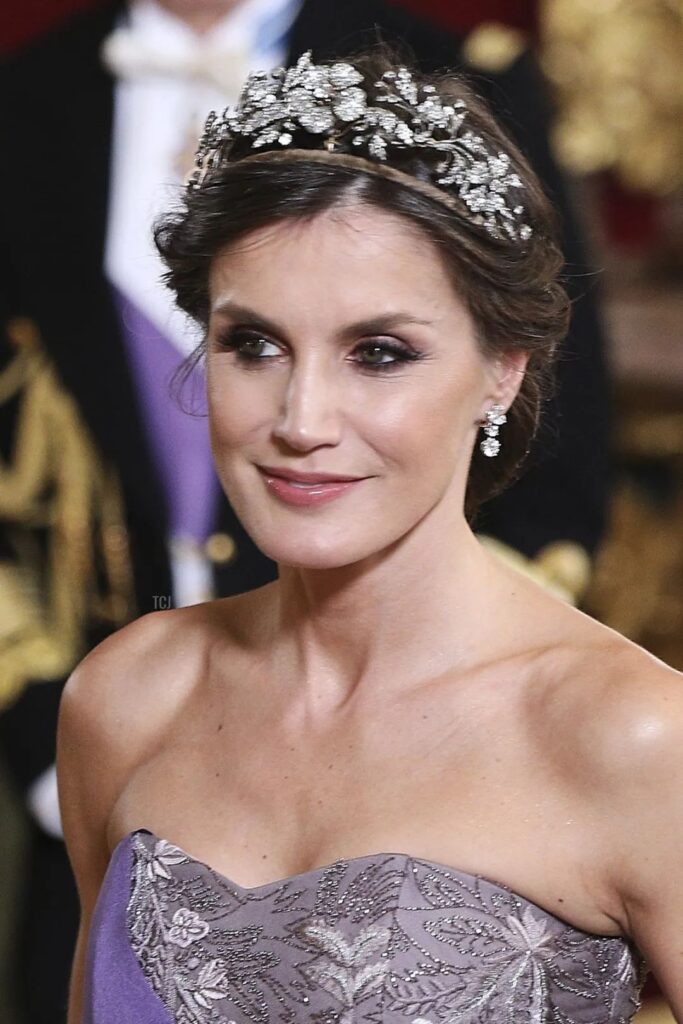
Another tiara that might suit the young Crown Princess is Queen Sofia’s personal favorite – the Mellerio Shell Tiara. This tiara, made in 1867, was personally purchased by the last Queen of Spain, Isabella II, from the ancient royal jeweler Mellerio dits Meller and designed by master craftsman Oscar Massin.
Almost every Spanish princess has worn this tiara, and its light, lively design complements Princess Leonor’s personality.
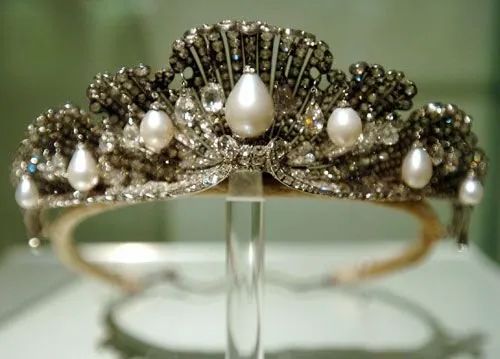
Which of these five Crown Princesses do you think has the most potential? Who will become the next generation’s trendsetting royal icon? The princess chosen by readers will become the focus of the author’s future articles, providing regular updates on her jewelry and fashion choices.
Crown Jewels and Tiaras: Which European Princess Will Be the Next Royal Fashion Icon?
Tweet
